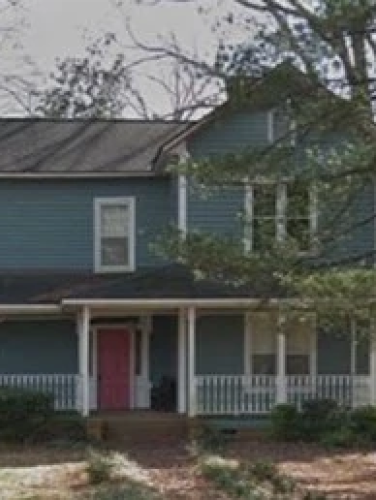
Dr. Walter Pharr Craven House
(ca. 1888)
Country doctor Walter P. Craven and his family resided in the Hopewell community of Mecklenburg County for nearly eighty years.
7648 Mt Holly-Huntersville Rd, Charlotte, NC 28216
Located in a rural setting northwest of Charlotte, the Dr. Walter Pharr Craven House is among rural Mecklenburg County's most intact dwellings of the post-Civil War period. The house was built by Dr. Walter P. Craven (1845-1929), likely soon after his 1888 purchase of the 18-acre property. He was born in Randolph County and raised in Iredell County. At the age of eighteen, Craven enlisted in the Confederate Army. His service ended when he was captured at the Battle of Five Forks, Virginia, eight days before the war's end, after which he spent several months as a prisoner at Staten Island, New York.
Property Quick Links
After the war, Craven returned to North Carolina and studied at Davidson College and Trinity College (now Duke University). In 1872, Craven entered the College of Physicians and Surgeons in Baltimore to study medicine. Upon completion of his training (about 1876), Dr. Craven returned to North Carolina and established his practice in the Hopewell community of Mecklenburg County. That same year he married Martha Addie May Gluyas (1859-1903), daughter of Captain and Mrs. Thomas Gluyas of Hopewell, with whom he had eleven children who survived to adulthood. Following Martha’s death, Dr. Craven remarried twice: first to Ossie Lawing of Spurrier in 1907, and then to Mary Andrews of Charlotte in 1917. Dr. Craven practiced medicine from one of the rear rooms on the west side of the Craven House, which was outfitted with special cabinets for stored medicine.
Considering that Dr. Craven had a large family and a country doctor's practice was not highly lucrative, it was not unusual that he also ran a small farm on his property. He hired Black farm laborers to help with his agricultural pursuits, which focused primarily on the cultivation of corn, wheat, and cotton. Dr. Craven was a highly visible member of the Hopewell community. He served the Hopewell Presbyterian Church as a ruling elder for several years, and his professional services were valued by the local population. Two of Dr. Craven’s sons – William and Thomas – also became doctors. Dr. Thomas Craven is reported to have lived and practiced medicine in the Craven House for a time after his father’s death, but later moved to Huntersville where he lived and maintained his own practice. After Thomas left the house, another son, Harry Craven, lived in the house for an indeterminate time before moving to Mooresville. For several years, the house was not continuously occupied, used instead as a summer retreat for members of the Craven family and as a gathering place for holidays. In the early 1950s, another of Dr. Walter’s sons, John, retired and lived in the house until his death in 1962. The house was then sold in 1963, ending the nearly eighty years of occupancy by members of the Craven family.
The T-shaped two-story form and vernacular Victorian decoration of the Craven House exemplify a popular local expression of farmhouse architecture that appeared between the late 1870s and the turn of the century. Associated with the Craven House is an assortment of farm outbuildings dating from the late 19th and early 20th centuries.

